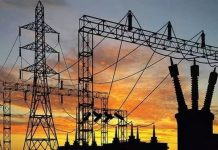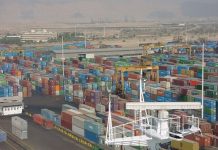ISLAMABAD: Pakistan is one of the most vulnerable countries to climate change impacts, which has a negative effect on the economy. Global warming, change in weather patterns, droughts, extinction of species, glaciers melting, and food insecurity have been attributed to climate change in Pakistan.
According to the Intergovernmental Panel on Climate Change (IPCC) 6th Assessment Report (AR6) 2022, climate change has adversely affected human physical and mental health. It can be mediated through a number of natural and human systems, including economic and social systems.
In April 2022, the country experienced its hottest month in 61 years. On April 30, 2022, the maximum temperature recorded in Jacobabad was 49°C, according to the Pakistan Meteorological Department (PMD). Both urban and rural populations are affected by climate change. Due to plenty of emissions from industries and the shortage of trees, the urban population faces heat strokes. Furthermore, due to the lack of proper infrastructure, the urban areas were flooded as a result of heavy rains. Climate change has reduced soil fertility, which results in a reduction in agricultural output.
Greenhouse gasses (GHGs) are the major cause of climate change. GHGs are primarily carbon dioxide, methane, and nitrogen dioxide. All aspects of the economy contribute to the emission of greenhouse gases, including energy, industrial processes and product use (IPPU), agriculture, forestry, and other land use and waste. According to the World Bank, carbon dioxide emissions are around 0.98 metric tons per capita which is higher than Bangladesh (0.5 MT per capita).
The energy sector is one of the major contributors to greenhouse gas emissions. In accordance with the World Resources Institute’s Climate Analysis Indicator Tool (WRI CAIT), energy accounts for 46% of Pakistan’s total annual GHG emissions, 26% of which is attributed to electricity consumption, 25% to manufacturing, 23% to transportation, and the remaining 26% to other energy-related activities.
Pakistan has massive potential for solar, wind, and hydroelectric power, and recent policies and initiatives have strongly advocated the need for a transition towards clean energy resources. Pakistan has committed to the international community that under the Alternative Renewable Energy (ARE) Policy, it aims to achieve 30% share of renewables (currently standing at 4%) in the energy mix till 2030.
Pakistan has established the “Eco-System Restoration Fund”, which will be used to support nature-based solutions to climate change and facilitate the transition to environmentally resilient initiatives, such as afforestation and biodiversity conservation.
In Pakistan, energy is a crucial component of the economy, making its transition a difficult undertaking, mainly due to the high cost involved.
In FY2021, Pakistan’s total installed capacity of electricity was 37,261MW, 4% more (1,289MW) than the previous year. In 2021, power generation reached 102,742GWh. Pakistan’s energy mix consists of 12.2% indigenous gas, 26.5% hydropower, 16.8% residual fuel oil (RFO), 19.7% RLNG, 6.7% nuclear, and 4.4% renewable energy, and a small amount of imported electricity. The use of RLNG has grown significantly in the energy mix, enabling improved supply to various power plants. Furthermore, RLNG is supplied to fertilizer plants, as well as the industrial and transportation sectors.
In September 2021, the Asian Development Bank (ADB) launched the Energy Transition Mechanism (ETM). The major purpose of the ETM was to accelerate the coal to clean energy transition. The ADB has established two separate funds under the ETM. The first one is the Carbon Reduction Fund and the other is the Clean Energy Fund. The carbon reduction fund provides a joint financial mechanism for incentivizing the coal-fired power sector. The clean energy fund’s purpose is to invest in clean and renewable energy expansion and promotion.
Pakistan has huge potential to generate solar and wind power. According to the World Bank, utilizing just 0.071% of the country’s area for solar photovoltaic (solar PV) power generation would meet Pakistan’s current electricity demand. Wind is also an abundant source of power generation. Pakistan has several well-known wind corridors with average wind speeds of 7.87m/s in 10% of its windiest areas.
According to Dr Abedullah, Chief of Research, Pakistan Institute of Development Economics (PIDE) in Islamabad, improving the quality of Pakistan’s power supply and strengthening the energy sector requires investment and operational changes. It can only be possible by engaging foreign investors and slowly moving towards renewable energy. The World Bank has estimated that more than 10,000MW of thermal capacity is going to retire and will be replaced with renewable energy by 2032.






